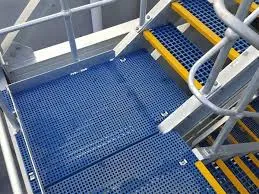
-
 Afrikaans
Afrikaans -
 Albanian
Albanian -
 Amharic
Amharic -
 Arabic
Arabic -
 Armenian
Armenian -
 Azerbaijani
Azerbaijani -
 Basque
Basque -
 Belarusian
Belarusian -
 Bengali
Bengali -
 Bosnian
Bosnian -
 Bulgarian
Bulgarian -
 Catalan
Catalan -
 Cebuano
Cebuano -
 China
China -
 China (Taiwan)
China (Taiwan) -
 Corsican
Corsican -
 Croatian
Croatian -
 Czech
Czech -
 Danish
Danish -
 Dutch
Dutch -
 English
English -
 Esperanto
Esperanto -
 Estonian
Estonian -
 Finnish
Finnish -
 French
French -
 Frisian
Frisian -
 Galician
Galician -
 Georgian
Georgian -
 German
German -
 Greek
Greek -
 Gujarati
Gujarati -
 Haitian Creole
Haitian Creole -
 hausa
hausa -
 hawaiian
hawaiian -
 Hebrew
Hebrew -
 Hindi
Hindi -
 Miao
Miao -
 Hungarian
Hungarian -
 Icelandic
Icelandic -
 igbo
igbo -
 Indonesian
Indonesian -
 irish
irish -
 Italian
Italian -
 Japanese
Japanese -
 Javanese
Javanese -
 Kannada
Kannada -
 kazakh
kazakh -
 Khmer
Khmer -
 Rwandese
Rwandese -
 Korean
Korean -
 Kurdish
Kurdish -
 Kyrgyz
Kyrgyz -
 Lao
Lao -
 Latin
Latin -
 Latvian
Latvian -
 Lithuanian
Lithuanian -
 Luxembourgish
Luxembourgish -
 Macedonian
Macedonian -
 Malgashi
Malgashi -
 Malay
Malay -
 Malayalam
Malayalam -
 Maltese
Maltese -
 Maori
Maori -
 Marathi
Marathi -
 Mongolian
Mongolian -
 Myanmar
Myanmar -
 Nepali
Nepali -
 Norwegian
Norwegian -
 Norwegian
Norwegian -
 Occitan
Occitan -
 Pashto
Pashto -
 Persian
Persian -
 Polish
Polish -
 Portuguese
Portuguese -
 Punjabi
Punjabi -
 Romanian
Romanian -
 Russian
Russian -
 Samoan
Samoan -
 Scottish Gaelic
Scottish Gaelic -
 Serbian
Serbian -
 Sesotho
Sesotho -
 Shona
Shona -
 Sindhi
Sindhi -
 Sinhala
Sinhala -
 Slovak
Slovak -
 Slovenian
Slovenian -
 Somali
Somali -
 Spanish
Spanish -
 Sundanese
Sundanese -
 Swahili
Swahili -
 Swedish
Swedish -
 Tagalog
Tagalog -
 Tajik
Tajik -
 Tamil
Tamil -
 Tatar
Tatar -
 Telugu
Telugu -
 Thai
Thai -
 Turkish
Turkish -
 Turkmen
Turkmen -
 Ukrainian
Ukrainian -
 Urdu
Urdu -
 Uighur
Uighur -
 Uzbek
Uzbek -
 Vietnamese
Vietnamese -
 Welsh
Welsh -
 Bantu
Bantu -
 Yiddish
Yiddish -
 Yoruba
Yoruba -
 Zulu
Zulu
rtrp pipe
Understanding RTRP and Its Importance in Modern Pipe Systems
In the world of industrial piping, the concept of RTRP, which stands for Reinforced Thermosetting Resin Pipe, has emerged as a game-changer. As industries increasingly seek materials that boast both durability and efficiency, RTRP has become vital in applications ranging from water transportation to chemical processing. Its unique properties and advantages make it a subject worth exploring, particularly for stakeholders invested in modern piping solutions.
What is RTRP?
RTRP is a composite material that combines reinforcing fibers, typically glass or carbon fibers, with a thermosetting resin. This combination results in a pipe that is not only lightweight but also possesses significant strength and resistance to corrosion, heat, and chemical exposure. The manufacturing process of RTRP involves winding or layering the reinforcing fibers within the resin, catalyzing the mixture to create a hard, solid structure. This allows RTRP pipes to withstand high pressures and extreme temperatures, which are often encountered in industry applications.
Advantages of RTRP Pipes
1. Corrosion Resistance One of the most critical properties of RTRP pipes is their resistance to corrosive substances. Unlike traditional materials like steel, which can rust and degrade over time, RTRP remains unaffected by chemicals, making it suitable for transporting aggressive fluids.
2. Lightweight yet Strong The lightweight nature of RTRP is an advantage in installation and transportation. This not only reduces labor costs but also minimizes the risk of damage during handling and installation. The strength of RTRP, however, ensures that it can handle heavy loads, maintaining integrity under pressure.
3. Thermal Insulation RTRP has excellent thermal insulation properties, which means it can effectively manage temperature variations in the transported substances. This property is particularly valuable in applications involving hot liquids or gases, where maintaining temperature is critical for process efficiency.
4. Longevity and Low Maintenance With minimal degradation over time, RTRP pipes have a longer service life compared to many conventional piping materials. This longevity translates to lower maintenance and replacement costs, making RTRP a cost-effective choice in the long run.
rtrp pipe

Applications of RTRP
RTRP pipes find application in various sectors, including
- Water Treatment and Distribution Their corrosion resistance and durability make RTRP ideal for municipal water systems, where pipes are constantly exposed to harsh conditions.
- Chemical Processing In industries dealing with aggressive chemicals, RTRP offers a reliable option for piping solutions, reducing the risk of leaks and ensuring safety.
- Oil and Gas The energy sector often requires materials that can withstand extreme conditions. RTRP pipes are used in offshore platforms and refineries, where resilience is paramount.
- Waste Management The ability of RTRP to handle corrosive waste materials makes it a suitable option for sewage systems and industrial waste pipelines.
Conclusion
The advancements in piping technology have paved the way for materials that offer higher efficiency and longevity, with RTRP at the forefront. Its outstanding properties—corrosion resistance, strength, lightweight, thermal insulation, and low maintenance—make RTRP pipes an attractive choice for various industrial applications. As organizations continue to invest in infrastructure that prioritizes safety and cost-effectiveness, the role of RTRP is likely to grow even more significant in the coming years. For industries looking to upgrade their piping systems, considering RTRP could be a critical step toward future-proofing their operations.









